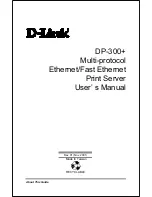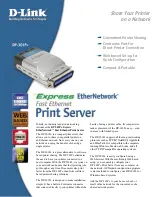
Chapter 7. Software support
255
The PR/SM in the System z9 EC to zEC12 servers attempts to assign all logical processors
to one book, packed into PU chips of that book in cooperation with operating system
HiperDispatch optimize shared cache usage. The PR/SM in the z13s seeks to assign all
logical processors of a partition to one CPC drawer, packed into PU chips of that CPC drawer
in cooperation with the operating system HiperDispatch optimize shared cache usage.
The PR/SM automatically keeps partition’s memory and logical processors on the same CPC
drawer. This arrangement looks simple for a partition, but it is a complex optimization for
multiple logical partitions because some must be split among processors drawers.
To use HiperDispatch effectively, WLM goal adjustment might be required. Review the WLM
policies and goals, and update them as necessary. You might want to run with the new
policies and HiperDispatch on for a period, turn it off, and then run with the older WLM
policies. Compare the results of using HiperDispatch, readjust the new policies, and repeat
the cycle, as needed. WLM policies can be changed without turning off HiperDispatch.
A health check is provided to verify whether HiperDispatch is enabled on a system image that
is running on z13s.
z/VM V6R3
z/VM V6R3 also uses the HiperDispatch facility for improved processor efficiency by better
use of the processor cache to take advantage of the cache-rich processor, node, and drawer
design of the z13s system. The supported processor limit has been increased to 64, whereas
with SMT, it remains at 32, supporting up to 64 threads running simultaneously.
The operating system support requirements for HiperDispatch are listed in Table 7-18.
Table 7-18 Minimum support requirements for HiperDispatch
7.3.17 The 63.75-K subchannels
Servers before z9 EC reserved 1024 subchannels for internal system use, out of a maximum
of 64 K subchannels. Starting with z9 EC, the number of reserved subchannels was reduced
to 256, increasing the number of subchannels that are available. Reserved subchannels exist
only in subchannel set 0. One subchannel is reserved in each of subchannel sets 1, 2, and 3.
The informal name,
63.75-K subchannels, represents 65280 subchannels, as shown in the
following equation:
63 x 1024 + 0.75 x 1024 = 65280
This equation is applicable for subchannel set 0. For subchannel sets 1, 2 and 3, the available
subchannels are derived by using the following equation:
Operating system
Support requirements
z/OS
z/OS V1R11 with PTFs
z/VM
z/VM V6R3
Linux on z Systems
SUSE Linux Enterprise Server 12
SUSE Linux Enterprise Server 11
Red Hat RHEL 7
Red Hat RHEL 6
a
a. For more information about CPU polarization support, see
http://www.ibm.com/support/knowledgecenter/linuxonibm/com.ibm.linux.z.lgdd/lgdd_t_
cpu_pol.html
Summary of Contents for z13s
Page 2: ......
Page 3: ...International Technical Support Organization IBM z13s Technical Guide June 2016 SG24 8294 00 ...
Page 24: ...THIS PAGE INTENTIONALLY LEFT BLANK ...
Page 164: ...136 IBM z13s Technical Guide ...
Page 226: ...198 IBM z13s Technical Guide ...
Page 256: ...228 IBM z13s Technical Guide ...
Page 414: ...386 IBM z13s Technical Guide ...
Page 464: ...436 IBM z13s Technical Guide ...
Page 476: ...448 IBM z13s Technical Guide ...
Page 498: ...470 IBM z13s Technical Guide ...
Page 502: ...474 IBM z13s Technical Guide ...
Page 568: ...540 IBM z13s Technical Guide ...
Page 578: ...550 IBM z13s Technical Guide ...
Page 584: ...556 IBM z13s Technical Guide ...
Page 585: ...ISBN 0738441678 SG24 8294 00 1 0 spine 0 875 1 498 460 788 pages IBM z13s Technical Guide ...
Page 586: ......
Page 587: ......
Page 588: ...ibm com redbooks Printed in U S A Back cover ISBN 0738441678 SG24 8294 00 ...
















































